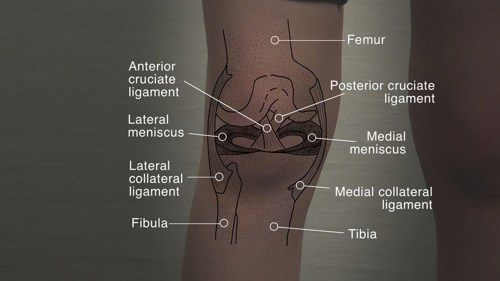Knee Pain
Knee pain is common at all ages.
In young active adolescents, overuse with sports or exercise is an important cause of anterior knee pain. Knee pain can be more common in times of growth.
Children who are overweight are more prone to knee pain.
Key points:
- Be alert to red flags - suggestive of malignancy, sepsis, rheumatic fever and non-accidental injury.
- Be alert to any features that suggest inflammatory arthritis.
- Be alert to referred pain from the hip.
- Remember - normal variants should not cause pain.
Anterior knee pain is common and encompasses a range of conditions that result in pain worse on exercise and likely relate to biomechanical factors such as patella tracking on flexion, leg alignment and foot posture.
- Osgood Schlatter's disease is common, especially in adolescent boys who are physically active (particularly those who play football / soccer or basketball) with tenderness over the tibial tuberosity which can be prominent. This is a traction apophysitis (inflammation of the growth plate of the tibial tuberosity) due to repetitive pull of the patellar tendon which attaches to the tibial tuberosity.
- Sinding-Larssen Johannson disease results in tenderness over the inferior pole of the patella. This is a traction apophysitis of the patella.
- Chondromalacia Patellae tends to be more common in adolescent girls with retropatella crepitus and may associate with hypermobility, flat feet and genu valgum (knock-knees).
Trauma in the knee can result in meniscal, or cruciate or collateral ligament injury. These injuries result after significant injury and there is likely to be bruising and even a swollen knee (haemarthrosis). The knee may lock or even be unstable.

A Discoid meniscus is a congenital condition and may remain asymptomatic. It may only cause symptoms (locking or pain) after trauma. Loose bodies can result from injury and the knee may lock or be unstable. Osteochondritis dissecans may result in a loose fragment / body but usually results in a tender femoral condyle (usually the medial femoral condyle).

